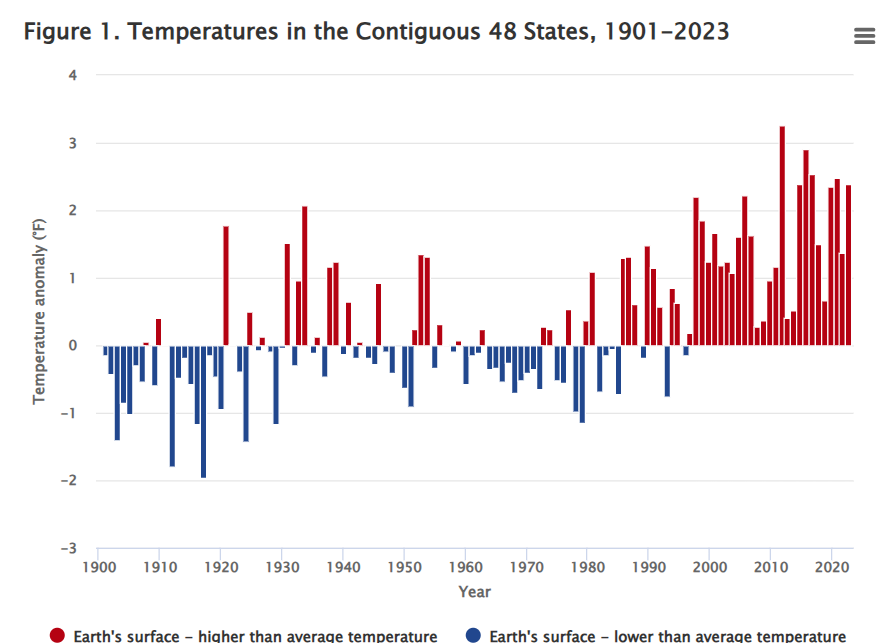OSHA (Occupational Safety and Health Administration) has proposed a new heat stress standard called Heat Injury and Illness Prevention in Outdoor and Indoor Work Settings. But the cogs of legislation turn slowly, and the risks the standard aims to address are harming the American workforce now.
While the rule is still moving through a lengthy legislative process, extreme heat is already causing preventable harm to workers. Employers who act now can reduce health risks, improve productivity, and get ahead of compliance requirements.
OSHA’s ‘Heat Injury and Illness Prevention in Outdoor and Indoor Work Settings’ Explained
OSHA’s Heat Injury Prevention in Outdoor and Indoor Work Settings would establish a federal standard aimed at preventing and reducing heat-related occupational injuries, illnesses and fatalities.
It is a programmatic standard, meaning it doesn’t just set a fixed parameter (like a maximum allowable temperature) but instead requires employers to establish and follow a comprehensive program.
It applies to all employers offering outdoor and indoor work across all general industry, construction, maritime, and agricultural sectors where OSHA has jurisdiction.
Employer Compliance Requirements for OSHA’s Proposed Heat Standard
Employers would be required to:
- Evaluate heat risks when ambient temperature or heat index reaches 80°F (26°C) or higher.
- Develop a site-specific Heat Injury and Illness Prevention Plan (HIIPP) covering monitoring, prevention, acclimatization, emergency response, and training.
- Involve non-managerial employees or their representatives in creating the plan.
- Ensure the HIIPP is available in languages employees understand.
Some specifics of what the OSHA standard will require are as follows:
- Providing cool water
- Shaded or air-conditioned rest areas
- Short, paid breaks
- Improved air circulation
- Cooling PPE
- Acclimatization schedules
- Effective two-way communication during heat exposure
What is the Most Important Mechanism to Combat Heat Stress?
The most effective mechanisms for reducing heat stress are maintaining hydration and regulating body temperature.
Drinking adequate cool water and allowing the body to shed heat via shaded rest breaks or cooling equipment keep core temperature within safe limits and prevent heat-related illness from escalating.
However, the reality on many worksites makes this more complex. In high-paced or physically demanding environments, workers may skip breaks, PPE may trap heat, and production schedules can limit access to shaded or air-conditioned areas.
These challenges mean that relying on individual responsibility for hydration and cooling is not enough. The OSHA standard is necessary because it compels employers to put structured, enforceable systems in place, ensuring that protection from heat stress is consistent, proactive, and not left to chance.
The Human Impact of Heat-Related Workplace Illness and Injury
Heat-related injury and illness is the leading weather-related cause of fatalities in the US1. Dozens of these deaths can be attributed to occupational heat exposure annually, while instances of non-fatal heat-related illnesses in the workplace reach well into the thousands2.
And with carbon reduction initiatives falling short in reversing climate change, the prevalence of heat-related injury and illness in the American workplace is only going to grow.
Consider the following climate change indicator for the contiguous United States:

Source: EPA
As temperatures rise, so do work-related heat exposure deaths. In 2021, the Bureau of Labor Statistics reported 36 work-related deaths due to environmental heat exposure3. Then in 2022, fatalities rose to 434, and in 2023 (the latest records), this figure rose to 555.
According to the Bureau of Labour Statistics, between 2011 and 2022, 479 workers died due to heat exposure on the job, averaging 40 fatalities per year. So, even if OSHA’s new heat stress standard is implemented at the earliest possible window in Q2 2026 (and that’s a big if), roughly 9 US workers could potentially perish due to preventable occupational exposure to environmental heat.
Workers most at risk are those doing physical work in direct sun or extreme indoor heat. Construction workers, for example, account for around 34% of all occupational heat-related deaths between 1992 and 20226.
As said by Assistant Secretary of Occupational Safety and Health, Douglas L. Parker:
‘Workers all over the country are passing out, suffering heat stroke and dying from heat exposure just from doing their jobs, and something must be done to protect them.’
The Business Impact of Acting Before OSHA’s Heat Stress Standard Takes Effect
While early compliance may seem costly, inaction can be far more expensive.
Heat stress is estimated to cost US businesses $100 billion annually due to lost productivity7. This figure is projected to double by 2030, and, according to an article published in the New York Times, could reach $500 billion by 20508.
A study on worker health and productivity under occupational heat stress revealed that 30% of the observed workers reported productivity losses during or at the end of a work shift.
Another study led by Loughborough University in 2022 offered even deeper insights. During this study, researchers simulated a full work shift under controlled hot-weather conditions to measure sustained output in physically demanding tasks, showing that physical work capacity dropped by 35% at 95 °F (35 °C) and plummeted to 76% at 104 °F (40 °C).
And as productivity decreases during these extreme working conditions, the risk of heat-related illness and injury skyrockets, often resulting in workers taking time off work to recuperate, which further inhibits business output and revenue potential.

Source: BLS
So, with the financial burden of occupational heat stress clear, the question is… can more stringent HIIPPs really make a difference? Based on case studies from around the world, the answer is yes!
A short film by La Isla Network, in partnership with Talking Eyes Media, spotlighted a Nicaraguan sugar plantation where heat-related injuries and deaths were once common, showing how simple protective measures dramatically improved conditions.
The protection program led to a 72% decrease in injuries, a 94% decrease in hospitalizations, and a 20% boost in productivity. What’s more, measures implemented were four times more affordable than the treatment typically required to get employees back in working shape.
How Cardinus Can Help
Whether you need a one-off risk assessment to kickstart your heat injury and illness prevention plans, or a complete end-to-end industrial ergonomics risk management approach, Cardinus can deliver a flexible solution tailored to your business and employees.
Our Industrial Ergonomics Solutions provide comprehensive support for protecting at-risk workers across industries impacted by heat and other environmental risks.
The cloud-based platform enables assessors to capture data directly at the worksite. Whether evaluating the ergonomics of a production line, measuring exposure to high temperatures, or reviewing work/rest cycles in hot environments.
By replacing slow, manual processes with fast, automated analysis, our solutions make it easier to turn assessments into actionable prevention strategies that protect both people and productivity.
Contact Cardinus today to learn more about our Industrial Ergonomics Solutions.
Latest Updates on OSHA’s Heat Stress Standard – A Timeline
May 2025 – Political developments & potential impacts
- In May 2025, Donald Trump’s nominee for OSHA leadership, David Keeling, drew criticism from safety advocates. His confirmation is viewed by some as a potential roadblock to advancing the heat stress rule. Others feel he may attempt to weaken its provisions9.
June–September 2025 – Public hearing and post-hearing comment period
- OSHA held an informal public hearing from June 16 to July 2, 2025, inviting testimony from stakeholders and industry experts.
- Following the hearing, a post-hearing comment period was opened, running through September 30, 202510.
Through 2025 and Beyond – Administrative process & timeline
- The rule is in the administrative hearing phase, expected to conclude July 2025, followed by a 90-day period for additional testimony.
- If timelines hold, the earliest final rule implementation could be in Q2 202611.
Fall 2024–Winter 2025 – Public comment period and extension
- The NPRM’s initial 120-day public comment period (set to end Dec 30, 2024) was extended to Jan 14, 2025 to allow for more feedback12.
Aug 30, 2024 – Notice of Proposed Rulemaking (NPRM) published
- OSHA published the NPRM for Heat Injury and Illness Prevention in Outdoor and Indoor Work Settings in the Federal Register.
Ongoing – Broader regulatory context & state-level actions
- Until now, OSHA relied on the General Duty Clause to address heat hazards at the federal level.
- Several states already enforce their own heat illness prevention standards, e.g., California, Washington, Minnesota, and Oregon.
Citations
- National Weather Service – Heat-Related Fatalities Data
- OSHA – Heat Illness Prevention Materials
- Bureau of Labor Statistics – 36 Work-Related Deaths from Environmental Heat Exposure in 2021
- Wall Street Journal – One Worker’s Death from Extreme Heat Offers a Warning
- National Safety Council – Data on Exposure to Environmental Heat
- U.S. Environmental Protection Agency – Updated Climate Indicators Report
- Fast Company – A Business Case for Protecting Workers from Extreme Heat
- New York Times – Heat, Labor, and Productivity Losses
- The Guardian – Criticism of Trump OSHA Pick
- OSHA – Heat Exposure Rulemaking Process
- Quarles & Brady LLP – Update on OSHA’s Proposed Heat Rule
- OSHA – News Release on Heat Standard Public Comment Extension





